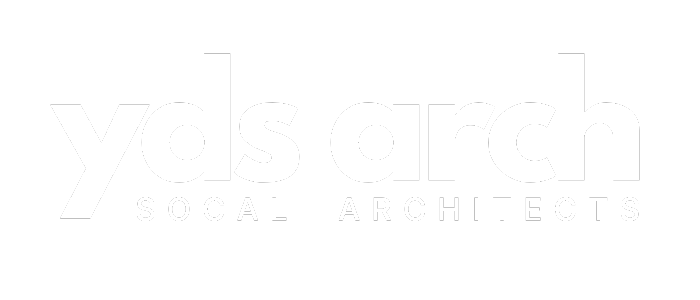Maria Gonzalez and her three children fled their Sylmar home with little more than their clothes as the Palisades Fire engulfed their neighborhood in January 2025. A month later, they remain in temporary housing, navigating a labyrinth of insurance claims and rising construction costs. “We want to rebuild, but even with insurance, the numbers don’t add up,” Maria says. “We’re applying for federal assistance, but affordable housing still feels out of reach for families like ours.”
The devastating Los Angeles Fires highlights the urgent need for disaster recovery housing in California. This exemplifies the growing California housing crisis, where wildfire damage housing shortages leave families struggling to rebuild their lives. With wildfire frequency increasing, affordable housing solutions become even more critical.
Maria’s story echoes across Los Angeles County, where wildfires have displaced thousands and exacerbated an already dire low-income housing crisis. For developers and communities committed to rebuilding sustainably and providing long-term affordable housing, the California Housing Finance Agency (CalHFA) has unveiled a critical resource: the 2025 Mixed-Income Program (MIP), a financing tool for affordable housing designed to accelerate the creation of multifamily affordable housing for families at all income levels.
What is the Mixed-Income Program (MIP)?
Established under Senate Bill 2 (SB2), CalHFA’s MIP provides long-term, low-interest subordinate loans for new construction multifamily projects that reserve units for households earning between 30% and 120% of the Area Median Income (AMI). With $50 million available in 2025 for CalHFA’s MIP funding, the program targets developments that blend affordability—ensuring teachers, firefighters, and families like Maria’s can live in the communities they serve. The Mixed-Income Program initiative is key to addressing California’s housing shortage.
Key Features of the 2025 MIP:
- Competitive Loan Limits for Affordable Housing Projects: Up to $4 million per project or $50,000 per income-restricted unit (up to $60,000/unit in high-resource areas).
- Flexible Affordability Requirements to Serve Diverse Populations: Minimum 20% of units at 50% AMI or below, with flexible income averaging to serve diverse households.
- Priority Consideration for Wildfire-Affected Areas in California: Projects in cities impacted by recent fires (e.g., Palisades, Eaton, Hurst) may receive ranking bonuses during application review.
- Leverage State Grants for Infrastructure and Transit-Oriented Development: Can be paired with state grants like Infill Infrastructure Grants (IIG) and Transit-Oriented Development (TOD) funds.
How MIP Works: Lessons from the Meridian Family Apartments
While the Gonzalez family awaits solutions in LA, the success of San Jose’s Meridian Family Apartments illustrates MIP’s potential as an example of mixed-income housing development. This 233-unit development, approved in March 2024, combines 4% tax credits for affordable housing, CalHFA’s permanent loans, and a $4 million MIP subsidy to house families earning 30%–70% AMI.
Key highlights:
- Community Impact: 231 income-restricted units, including 73 with HUD vouchers for veterans and large families, demonstrating the benefits of MIP for low-income families.
- Design Innovations: Six-story, transit-oriented development (TOD) with retail space and amenities like a fitness center and playground.
- Cost Containment: Competitive bidding and value engineering kept costs manageable despite Bay Area construction challenges.
“The MIP subsidy filled a critical gap,” says ROEM Development’s project lead. “Without it, serving the lowest-income tenants wouldn’t have been feasible.” This shows the benefits of CalHFA MIP for developers.
Why MIP Matters for Los Angeles Wildfire Recovery
Rebuilding communities after wildfires requires more than temporary fixes—it demands housing that’s resilient, inclusive, and permanently affordable. MIP’s focus on long-term affordability (55-year covenants) and mixed-income models ensures communities retain socioeconomic diversity even as neighborhoods rebuild.
For developers, the program offers:
- Subordinate Debt: Second-lien loans that reduce reliance on high-cost financing, supporting disaster recovery housing efforts.
- Flexibility: Combines with tax-exempt bonds, 4% tax credits, and infrastructure grants.
- Speed: Priority processing for “shovel-ready” projects with secured permits and environmental clearances, vital for rapid rebuilding after disasters.
How to Apply for MIP Multifamily Subordinate Loan Funding
Applications for CalHFA’s $50 million fund are open until the funds are allocated. Awards are contingent on 2025 funding allocations. To ensure a smooth application process, several key steps and documents are essential. This outlines the CalHFA MIP application process and steps to apply for affordable housing funding.
Key Application Steps:
It is crucial to use the most recent CTCAC Income and Rents Limits document and the TCAC Workbook available on the CTCAC website. For closing documents, refer to the CalHFA Loan Closing Instructions and the Mixed-Income Closing Checklist.
“Applying for CalHFA’s Mixed-Income Program can feel overwhelming, with numerous documents, requirements, and deadlines. YDS Architects is here to help you demystify the process and prepare a strong MIP application. If you’re interested in the MIP opportunity, the best approach is to discuss your project with a licensed architect who understands the intricacies of the MIP and can guide you through each step. Consult with affordable housing experts to navigate the complexities.”
A Call to Action
As of 2/13/2025 – CalHFA is currently accepting applications for the 2025 Mixed-Income Program. All 2025 applicants for the CalHFA Mixed-Income Program are encouraged to submit a complete application as soon as possible to secure funding for your affordable housing project.
“The Meridian project shows what’s possible when public funding aligns with community needs.” “In wildfire zones, the MIP Loan can be the catalyst for housing that’s not just rebuilt—but reimagined.” For families like Maria’s, the path home begins with units they can afford. For developers, the 2025 MIP offers the tools to make that vision a reality.
If you have a multifamily project in mind and would like to explore how the MIP can support your goals, we invite you to connect with YDS Architects for a free architect consultation.
YDS Architects, is proud to support equitable recovery through innovative design and policy. More dedicated resources for rebuilding at ydsarch.com/rebuilding-together.
Additional Resources:

